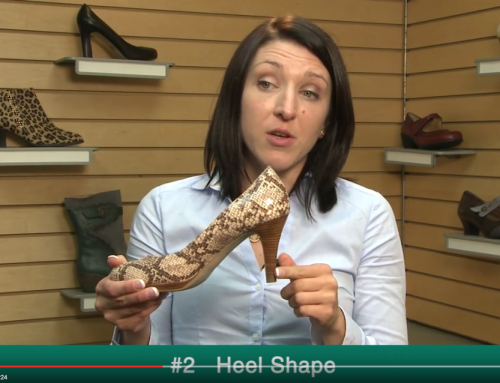There are three types of footwear. There’s your casual footwear that you’re going to wear everyday for work. There’s functional or athletic footwear that you’re going to wear for activities and then there’s your party shoes. Shoes that you’re going to wear for short periods of time, out for dinner or dancing.
As a pedorthist I’m not too concerned about your party shoes. I’m sure you’ll look fantastic. What I’m most concerned about are your casual everyday shoes and your athletic or functional footwear because this is what your feet are going to depend on most of the time.
There are two key criteria to consider when purchasing footwear, support and fit. There are a few simple tests you can do while out shopping. The heel counter test. The heel counter is the back part of the shoe that controls motion from side to side and it shouldn’t bend. So by placing the shoe in the palm of your hand you just take your thumb and you try to bend it down. It shouldn’t bend. Then there’s the torsional stability test. That’s a side to side motion. Take the shoe and you just try to bend it from side to side and it shouldn’t twist too much. Then the midfoot bend test. Simply by taking the shoe in the middle try to bend it in the middle. There should be a shank in giving you good support. The shoe can flex at the front part because that’s where your foot flexes.
To check for a good fit, it’s important to have your feet measured when you’re buying shoes as our feet sizes can change throughout out lifetime, especially during pregnancy. A shoe should be comfortable when you put it on right away. It’s a myth that it should be tight to start with. Having tight shoes can cause pain or problems, restrict motion about the joint. Remember, if your shoes are failing you, your feet and legs won’t be far behind.




